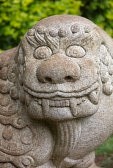Please return to previous page.
-- by order of Qilin.

Outlier Press www.outlierpress.com

What is a chapbook?
The term chapbook is first found in print in 1824, but the books themselves have a much longer history. These little books first appeared in the century following Gutenberg's 1455 invention of the movable-type printing press and rode the gently rising tide of literacy to reach a high-water mark of popularity in the seventeenth and eighteenth centuries.
Typically, they took the form of small, paper-covered booklets measuring about four inches by six inches, having up to 24 pages, and illustrated with crude woodcuts and decorative cover titles.
Literacy spelled the death of the oral tradition and its balladeers. The improvisations of the ballad singer were found wanting when measured against the authority of a printed text. Paradoxically, the chapbook, while contributing to the demise of oral culture, served to keep alive its content -- traditional fairy tales, folklore, nursery rhymes, and ballads -- as well as becoming a vehicle for popular bawdy stories and chivalric romances.
Through those long years when only the wealthy could afford to buy hand-sewn, leather-bound books, chapbooks were hawked by pedlars, or chapmen (1592, from the Old English meaning "to barter"), for two or three pence a copy, at a time when an average agrarian wage was 12 pence a day. Thus, chapbooks became a vital part of the popular culture of the lower classes in England, and ironically, were extremely important in the development of a literate society.
By the nineteenth century, as printing costs continued to fall, the popularity of the chapbook began to give way to the more sophisticated journalism of newspapers and magazines. Since the Second World War, however, the chapbook has enjoyed a revival, but this time as vehicle for literature.
The chapbooks of poetry and short prose that are produced today by individuals and publishing houses exhibit a wide range of form, quality and price, although one rule always applies: these books are never more than 48 pages long. Some are produced like fine art, printed on special presses in limited, numbered editions, or hand-illustrated by artists, and these tend to sell for prices that may range as high as $100. Some are rudely assembled as a sheaf of photocopies fastened with a staple. Many are sold personally by their authors at public readings.
Perhaps because of the diversity of form and the limited numbers of copies produced, there tends to be a good public following for works brought out in chapbook form, and many of these books are now valued by collectors.